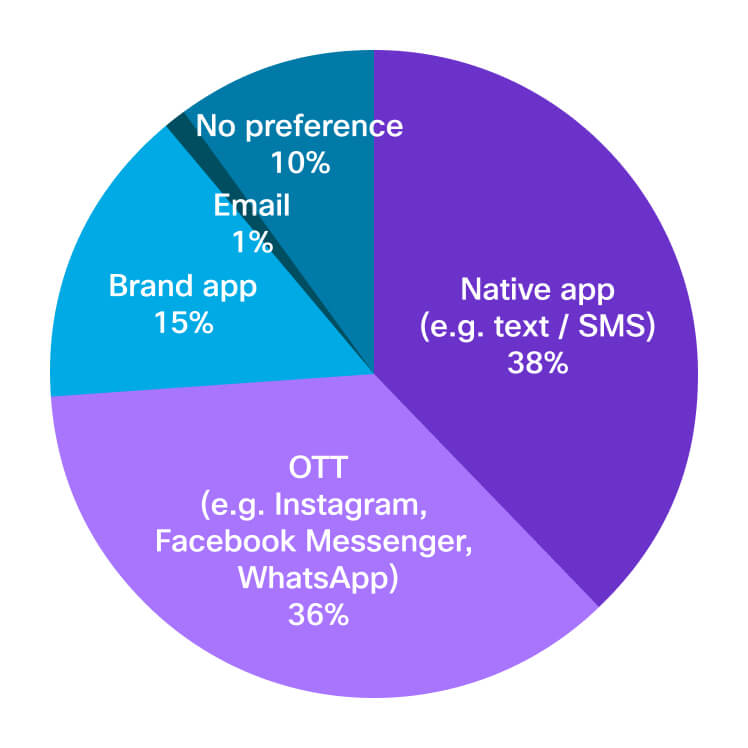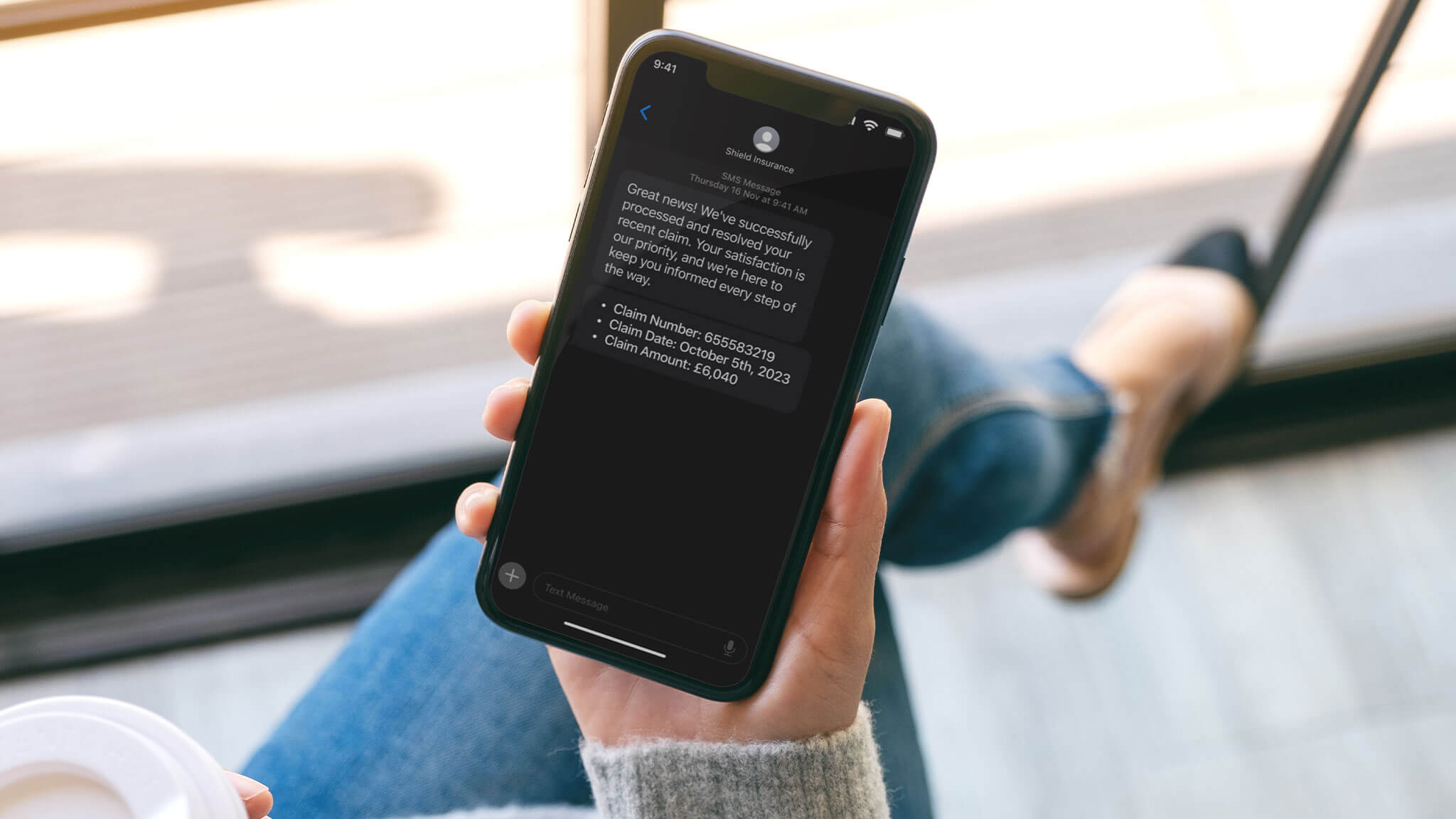Your guide to bulk SMS messaging, benefits, use cases, and 5 steps to success.
Explore the benefits of bulk SMS messaging, its potential use cases, and a step-by-step guide to enterprise implementation.
Contents
There are more than 6 billion smartphone users worldwide - 87% of which regularly send messages. Now, what if you could reach all of them at once with meaningful interactions that drive awareness and build trust in your brand? With bulk SMS messaging you can.
In this guide, we’ll explore the benefits of bulk SMS messaging and potential use cases, and provide a five-step guide to help integrate it into your comms strategy.
What is a bulk message?
Bulk SMS messaging, also known as mass text messaging or application-to-person (A2P) messaging, allows you to send large volumes of messages to a targeted audience group simultaneously. It's a fast and cost-effective way to connect with a huge pool of your customers in the right place.
In fact, it’s been used by brands across all industries to notify customers and share vital information for more than twenty years. And that includes commercial uses such as product promotions, appointment reminders, shipping updates, and more. Through an SMS gateway provider or messaging platform, you can use bulk SMS services to send messages to a large number of mobile users with just one action.
What are the benefits of bulk SMS messaging?
Fast: Deliver messages in seconds for timely interactions that raise awareness, including limited-time offers, new releases, and company announcements.
Personal: Meet customers where they are with personalized messages and nurture trust through direct and private one-to-one conversations.
Reliable: Improve the chances that your customers will always read your messages by avoiding email spam filters and cluttered inboxes.
Cost-effective: Optimize campaign ROI with SMS and its low cost per message, wide reach, and high open rate.
Low effort: Simplify mass messaging with zero need to download additional apps and a 160-character limit that makes messages easy to read.

Plus, in our recent State of Messaging research report, 38% of US customers say text is their preferred way to receive messages from brands. SMS is also the most popular way for customers to get in touch with a business for help or information.
While bulk SMS offers lots of benefits, it's important for businesses to adhere to regulations related to SMS marketing to avoid spamming customers and maintaining a positive relationship.
Bulk SMS use cases across industries
Many businesses are aware of or are using bulk SMS to initiate two-way interactions, introduce chatbots, and improve user security through two-factor authentication. But there are plenty of industry-specific use cases too, for example:
Retail brands
Promote products and send personalized offers
Enable in-store or curbside pickup services
Deliver abandoned cart alerts and logistical updates
Healthcare organizations
Send proactive prescription refill reminders
Automate patient appointment scheduling
Deliver digital test results to patients
Travel providers
Deliver flight delay or cancellation alerts
Greet and thank their customers
Send reward programme updates
Banks and financial institutions
Deliver real-time fraud prevention and transaction alerts
Confirm identities and profile customers
Streamline statement and payment reminders
Whatever your industry, bulk SMS messaging can be a useful tool, but there are some important aspects to consider before getting started.
Why contact frequency and compliance matters
When done right, you can use bulk SMS to enrich the brand experience—driving customer engagement while maintaining compliance. But successful SMS is easier said than done and requires some careful considerations. Many people use SMS messages exclusively to keep in touch with family and friends.
79% of US customers feel businesses encroach on their personal space through excessive messaging alerts and notifications.
Getting the timing and frequency right is critical, so before you send any messages to your customers, get their explicit permission to do so. You can achieve this by using an opt-in form on your website or encouraging people to join through other channels.
Recipients also need to know what they’re signing up for, how often they can expect to hear from you, and of any message and data rates. We recommend using a double-opt-in confirmation to ensure customers don’t sign up by mistake, reducing the risk of them unsubscribing later.
And remember, promotional messages are subject to strict consent laws, so you must always keep a secure record of consent. Regulations also vary worldwide, so it’s vital that your network carrier offers total compliance with the latest global SMS laws.
How to send bulk SMS in five steps
1. Find the right network carrier for your needs
The best bulk SMS service providers will handle and offer tools for route optimization, regulatory compliance, and consent management for you, enabling you to focus on your customers.
Ideally, they will offer Tier 1 connections in the geographies where the majority of your customers are. These connections are where the SMS service providers is directly connected with carriers, and SMS traffic is not routed through an aggregator. Depending on what region you operate in and industry, SMS service providers should include built-in controls for GDPR, HIPAA, CCPA, and ISO 270001 for total peace of mind.
Engage with customers around the world with our global communications infrastructure offering Tier 1 carrier network. Read our eguide to find out more.
There are multiple ways to use a carrier’s network, such as integrating into their gateway using APIs or building a dedicated point solution.
Find out how to pick the right SMS provider for sending global SMS.
2. Get the appropriate code.
Next, you’ll need a code to send messages. This acts as your business phone number. Ideally, your network carrier will offer flexible Sender ID options to fit your needs, including short, long or alphanumeric codes.
10-digit long codes are fine for specific uses, but they’re more likely to end up in spam when used for bulk texts. But four, five, and six-digit short codes are preapproved by carriers for high throughput and aren’t subject to the same carrier filtering.
3. Craft your message.

Every message you write should deliver value and a clear call to action in 160 characters or less. You must also include your business name, so recipients can identify the sender.
Including opt-out instructions is also essential and can be as simple as saying, “Reply STOP to opt-out.” Remember to keep a secure record of consent at all times.
4. Send it.
Use your best judgment to send bulk SMS messages at appropriate times, for example, by checking regional business hours, social hours, and avoiding days of religious observance.
5. Track your results.
Track the delivery status of your messages, including what percent have been accepted, delivered and received. Using CPaaS you’ll easily be able to do this all in one place. You can also analyze which content has resonated best with your customers so you can refine your campaign strategy and improve results over time.
Read this article to get up to speed on latest SMS marketing best practices.
Get in contact with us today or explore on our bulk SMS offering to find out how you can use bulk SMS messaging to seamlessly interact with your customers.